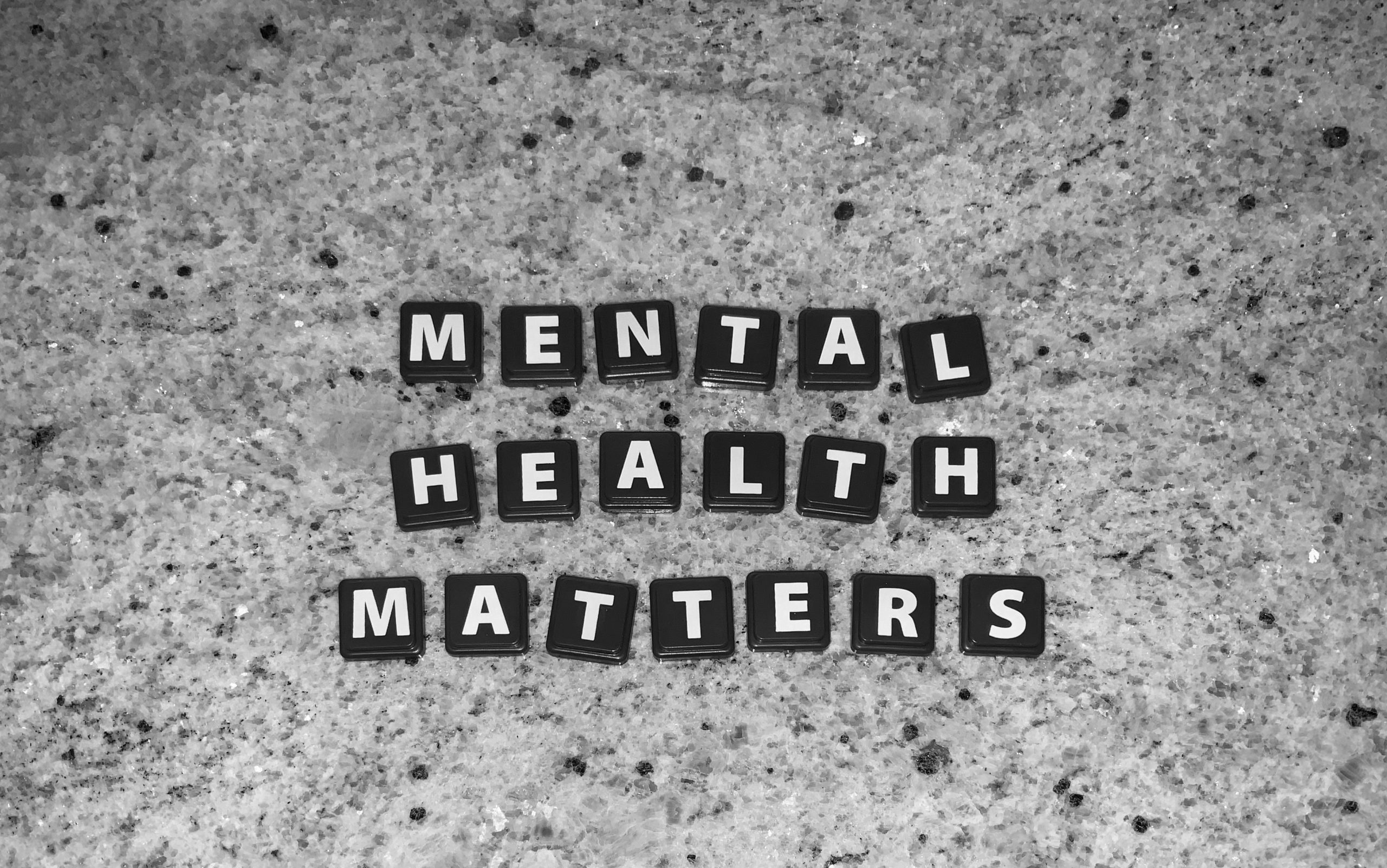
Tips to manage your emotions
With the Mental Health Awareness month next month, we’re sharing some really useful content from our friends at the UK Mental Health Foundation.
We are supporting this fantastic charity and the work they do by trying to raise awareness of the mental health challenges people face in the workplace, and to reassure our customers that we take mental health struggles seriously. We aim to create a supportive and flexible environment for training to take place in, regardless of your own battles.

Why is it important to understand and manage your emotions?
Managing our emotions is a skill, just like riding a bike. Some people learn to manage their emotions in childhood by watching how their parents or caregivers manage their own difficult emotions. But what happens if our caregivers didn’t have healthy strategies to manage their feelings, or if we didn’t have a consistent person to teach us?
If we aren’t taught healthy ways to manage our emotions at home, it can be difficult to know what this looks like or even means.
We all feel intense emotions at times – this is normal. However, if we don’t have healthy ways to manage these emotions, they can start to harm our behaviour and relationships.
In the short term, not managing our emotions can increase our risk of anxiety and withdrawal, and lead to difficulties controlling our behaviour. In the long term, we may experience more conflict and relationship breakdowns, and we could be more at risk of depression and other mental health conditions.
So, it’s important to understand and manage our emotions, so we can feel good in our relationships and within ourselves.
- Notice your emotions
Noticing your emotions as you’re feeling them is an important first step to understanding them. From there, you can choose how you want to react.
You can start to notice your emotions by checking in with yourself throughout the day. Try writing down how you’re feeling on a piece of paper, on a note on your phone or in a journal.


- Name your feelings
Naming your feelings may sound similar to noticing them, but the act of naming them can help in two main ways:
1. When you speak your feelings out loud, your brain automatically begins to reevaluate the situation that triggered those feelings. This process, known as cognitive reappraisal, can make the situation feel less upsetting.
2. Voicing your feelings acknowledges them, which brings acceptance. It also acts as a reminder that emotions aren’t permanent and can be noticed and let go of.
Naming your feelings could be as simple as saying, “I’m feeling tired and grumpy today, but a little excited for this evening.” You could set yourself the goal of naming your feelings to your spouse, friends or family members once a day. Alternatively, if sharing your emotions with others feels too much right now, you can practice telling yourself in the mirror.
- Identify your triggers
When we’re in a situation that triggers intense emotions, we get a physical reaction. This physical reaction can indicate that someone has overstepped our boundaries or that something they said or did reminded us of a painful past experience.
One way to identify your triggers is to concentrate on your body. Here are some signs that you may be feeling emotionally triggered:
- Sweating
- Rapid heart rate
- Panic or anxiety attack
- Finding it difficult to breathe
- Sudden changes in your mood
- Tension in your muscles, jaw, or fists
- Experiencing a series of negative thoughts
- Feeling panicky, scared, or generally unsafe
- Experiencing a sudden urge to escape or run away.
When you notice this physical reaction, it can help to ask yourself:
- What happened that triggered me?
- Did the trigger event bring up any thoughts or memories?
- Does this feeling remind me of something from my past?
These questions can help you identify what caused you to feel triggered in the present, and what experience it may have reminded you of from the past.


- Give yourself compassion
Showing yourself compassion can help you understand and regulate your emotions, improve your life satisfaction, and make you feel more connected with the people around you. Self-compassion may also offer you some protection against mental health conditions such as anxiety and depression.
You can give yourself compassion in three ways:
- Self-kindness: Treating yourself like you would a friend, and taking care of your body with exercise, healthy foods, or rest.
- Move through pain: We all make mistakes, experience pain, and face obstacles. These are a natural part of being human. Recognising this can help you feel less alone and ashamed of your struggles.
- Mindfulness: Practicing mindfulness can help you understand, accept and let go of your difficult emotions when you feel in distress.
- Write down your feelings
By processing your difficult feelings and getting them down on paper, you begin to let them go. Studies show that regular journaling helps ease our painful emotions long-term. Journaling consistently for several months is also associated with fewer symptoms of depression.
If you find it difficult to put your feelings into words, drawing, sculpting and painting are also great ways to get in touch with your feelings.


- Accept your emotions (rather than fighting them)
If you didn’t feel safe showing emotions like anger or sadness when you were a child, these emotions may be quickly followed by negative thoughts like:
“I need to toughen up.”
“I’m weak for feeling like this.”
“It’s not a big deal.”
“I just have to stay busy.”
When trying to understand and respond to your emotions, it’s important to do so without criticism or judgement, or by avoiding or dismissing them. When you accept and acknowledge your emotions, the emotions may become less distressing, which can make them easier to manage.
You can practice accepting your emotions by imagining that they are leaves on a stream. You can’t stop the leaves from falling, but you can watch them flow downstream, further and further away, until eventually you can’t see them at all. They are temporary, just like your difficult emotions.
You can also learn to accept your emotions using positive affirmations.
- Make positive affirmations a part of your daily routine
Positive affirmations are phrases you say to yourself to alter negative thinking patterns and acknowledge your difficult feelings. Regularly using positive affirmations can decrease stress, improve our wellbeing, and help us change our behaviour.
Here are some examples of affirmations you can use:
- I give myself permission to feel my emotions.
- I can express my emotions in healthy ways.
- I am in control of my emotions, and I choose how to respond.
- I can communicate my emotions without losing control.
- I am capable of finding healthy ways to release my emotions.
- I can pause and reflect before acting on my emotions.


- Give mindfulness a try
Mindfulness can help us understand our emotions and handle them in healthier ways. It can also make distress feel less overwhelming, help us bounce back from difficult emotions quicker, and prevent us from getting stuck in negative thought cycles.
In terms of our overall mental health, mindfulness may also reduce the symptoms of anxiety and depression.
- Speak to someone
It’s not easy learning how to manage your emotions on your own. So, if you’re finding it tough, that’s okay. Many professionals are trained and experienced in helping people just like you with emotion management.

Check out some of the useful organisations and resources we recommend below.
If, after following these tips, you’re still struggling to understand and manage your emotions, it’s okay. Seeking professional support can be helpful during this process.
You can seek support from your local GP or get guidance from specialist mental health services, such as from a therapist or counsellor.
You can also seek support from mental health organisations, such as:
- Samaritans: Offers free, 24/7 confidential support for anyone in distress.
- NHS Every Mind Matters: Provides self-help tools to help you understand and manage your emotions.
- Mind Infoline: Gives advice, information, and support to those struggling with their mental health.
- Rethink Advice and Information Service: Practical guidance for people living with mental health conditions.
- MindEd: Online platform that offers free, research-backed resources.
- StepChange: Free debt advice to help people regain financial security.
- The Campaign Against Living Miserably (CALM): Helpline and web chat service for people in crisis.
If you would like to know more about mental health conditions and how to support those around you deal with mental health struggles, then check out our Mental Health First Aid course.
Contact us on 01793 975353 or office@keyperformancetraining.co.uk for more information about how we can help or to book your course today.

Need more information?
For more information please do get in touch.
You can reach us via our contacts page, via email or just give us a call on 01793 975353
